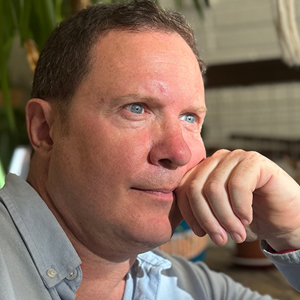
Written by Luisa Kos
Understanding anxiety and depression
Anxiety and depression are among the most common mental health challenges, yet they can feel deeply personal and isolating. They can affect your mood, thoughts, behaviours, and even physical health. Anxiety might manifest as excessive worry, restlessness, irritability, or panic attacks, while depression often brings persistent sadness, lack of motivation, fatigue, and a sense of hopelessness.
These struggles can impact relationships, work performance, sleep, and overall quality of life. Left untreated, they can become chronic patterns that feel difficult to escape. However, with the right support and therapeutic approach, you can regain a sense of balance, control, and fulfilment in your life.
Signs You might benefit from therapy
It’s normal to experience stress, sadness, or worry from time to time, but when these feelings become persistent, overwhelming, or interfere with daily life, professional support can help. You might benefit from therapy if you:
- Feel anxious, restless, or on edge most of the time
- Experience panic attacks or a constant sense of dread
- Have trouble sleeping or suffer from chronic fatigue
- Struggle to concentrate or feel mentally foggy
- Avoid social situations or activities you once enjoyed
- Feel emotionally numb or disconnected from others
- Battle with self-criticism, low self-worth, or guilt
- Have persistent negative thoughts or intrusive worries
- Experience mood swings or irritability
- Feel exhausted, unmotivated, or struggle to complete daily tasks
- Use unhealthy coping mechanisms like excessive drinking, overeating, or withdrawing from loved ones
If any of these resonate, seeking therapy could be an important step towards healing and relief.
How therapy for anxiety and depression can help
Therapy provides a structured, supportive, and non-judgmental space where you can explore your feelings, understand the root causes of your struggles, and develop healthier coping mechanisms. Some of the key benefits of therapy include:
- Gaining clarity on your emotions, triggers, and behavioural patterns
- Learning practical strategies to manage anxiety, panic, or depressive episodes
- Breaking negative thought cycles that fuel self-doubt, fear, and hopelessness
- Building emotional resilience to navigate stress, uncertainty, and life’s challenges
- Improving relationships by fostering better communication and emotional connection
- Reconnecting with yourself and rediscovering meaning, motivation, and joy
Therapy isn’t just about talking; it’s about developing real-life tools and insights to help you feel better, think more clearly, and make meaningful changes in your life.
Therapeutic approaches for anxiety and depression
There is no single approach to therapy that works for everyone. Depending on your needs, therapy may incorporate different methods, including:
Cognitive Behavioural Therapy (CBT)
CBT is one of the most effective treatments for anxiety and depression. It helps identify and change unhelpful thought patterns and behaviours, replacing them with healthier alternatives. It is structured, practical, and goal-oriented.
Psychodynamic Therapy
This approach explores past experiences and unconscious patterns that may be contributing to your anxiety or depression. It is particularly helpful for those who feel stuck in recurring emotional struggles.
Mindfulness-Based Therapy
Techniques such as mindfulness meditation and grounding exercises can help you stay present, manage racing thoughts, and reduce emotional overwhelm.
Compassion-Focused Therapy (CFT)
For those struggling with self-criticism or perfectionism, CFT helps develop self-compassion and emotional resilience.
Somatic Therapy
Since anxiety and depression can manifest physically (such as tightness in the chest, headaches, or fatigue), somatic therapy integrates the mind-body connection to promote healing.
Integrative Approach
Many therapists use an integrative approach, combining different therapeutic methods to create a personalised path towards healing.
What to expect in therapy
If you’re new to therapy, it’s natural to feel uncertain about what to expect. Here’s how the process typically unfolds:
- Initial session: This is an opportunity to explore your concerns, challenges, and goals in a safe and confidential space.
- Understanding your patterns: Together, we will identify patterns of thinking and behaviour that may be contributing to your anxiety or depression.
- Developing strategies: You will learn practical tools and coping techniques tailored to your specific needs.
- Building emotional resilience: Over time, therapy will help you develop a healthier relationship with your thoughts, emotions, and behaviours.
- Sustained progress: The goal is not just symptom relief but lasting personal growth and well-being.
Therapy is a journey, and change takes time. However, even small shifts in mindset and behaviour can lead to significant improvements in your quality of life.
Take the first step
Therapy helped me understand that depression is not a sign of weakness. It’s an illness, and like any illness, it needs treatment, care, and management.
Joshua G - Student
Finding the right therapist for you
Not every therapist is the right fit for everyone. Here are some things to consider when choosing a therapist:
- Experience & specialisms: Do they have experience working with anxiety, depression, or related concerns such as trauma or burnout?
- Therapeutic style: Do they take a structured, practical approach or a more exploratory, reflective one?
- Comfort & connection: Do you feel safe, understood, and comfortable sharing with them?
- Evidence-based approaches: Do they use scientifically supported methods like CBT, mindfulness, or psychodynamic therapy?
A good therapist will support you without judgment and help you gain insight, confidence, and tools to manage life’s challenges more effectively.
Find a specialist
Finding the right therapist for anxiety and depression is a crucial step towards healing and personal growth. A good therapist should provide a safe, non-judgmental space where you feel understood and supported. Look for someone with experience in treating anxiety and depression, ideally using evidence-based approaches such as Cognitive Behavioural Therapy (CBT), Psychodynamic Therapy, or Mindfulness-Based techniques. Consider their therapeutic style—whether you prefer a structured, goal-oriented approach or a more open, exploratory process. It’s also important to feel a genuine connection with your therapist, as trust and rapport play a key role in effective therapy. Many therapists offer an initial consultation, which can help you determine if their approach aligns with your needs. The right therapist will not only help you manage symptoms but also empower you to develop healthier coping strategies and create lasting change.

Daisy Marsh
I am a dedicated therapist with experience in both online and face-to-face counselling. My focus lies in offering personalised support and helping individuals and couples navigate through challenges such as anxiety and depression.

Juliana Jolly
I offer an empathetic and confidential space alongside extensive theoretical understanding of and experience with psychology.

Peter Reynolds
I hold an Advanced Diploma in Integrative Counselling. My training draws on a range of therapeutic approaches, which allows me to adapt my work to suit the needs of each individual client. Before training as a counsellor, I worked for many years in the arts, where I developed a deep interest in people’s stories, emotions and inner worlds — an interest that eventually led me to counselling. Alongside my private practice, I have worked in a bereavement charity and in LGBTQ+ mental health services. These experiences have given me particular insight into grief, loss, identity and the impact of marginalisation — all of which continue to inform my work today.

Maria Troupkou
I am a qualified Dance Movement Psychotherapist offering individual therapy sessions to children and adults.

Lynsey Hotchkies
I am experienced in working with individuals, groups and organisations.

Nick Stewart
I am an experienced Cognitive Behavioural Therapist. I trained at Kings College London, in the Institute of Psychiatry, Psychology & Neuroscience (IOPPN), graduating in 2018.

Richard Mann
As a therapist, I currently work for the NHS and work in private practice. I work with Anxiety, Depression and Trauma and specialise in Addiction, Relationship Issues (Infidelity, Intimacy issues and compulsive sexual behaviour ), LGBTQIA+ and Neurodiversity (Autistic and ADHD clients ) . I believe that therapy should be tailored specially for your individual needs – whether depression, anxiety, self-esteem or PTSD – and I provide a relaxed, safe space where you can feel free to share your issues confidentially and without judgement.

Katherine Watt
I’m a warm, perceptive and experienced therapist, trained in the person-centred approach. Person-centred counselling offers a supportive space in your life, where you can explore your feelings and experiences at whatever pace is comfortable for you.

Dafina Ganeva
I started my psychotherapy career as a volunteer of the bereavement team in St.Christopher’s hospice.

Amanda Salib
Shame dies when stories are shared in safe spaces. Each of us has our own unique story, and over my 7 years, I’ve had the privilege of hearing stories from people of all ages and backgrounds.

Amandeep Chana
It is important to me that I create a safe, warm and welcoming environment for you to be yourself. I know that sometimes we can feel like the world is against us.

Billi Silverstein
Seeking therapy can be a complex journey, requiring both commitment and emotional investment. She believes that within a safe and empowering relationship everyone has the capacity to become agents of change.

Eric Bettelheim
Unlike most psychotherapists I have substantial experience in the professions, business and academia.

Luisa Kos
I am a psychodynamic psychotherapist trained at WPF and Tavistock Relationships, and a registered member of the BACP. Since qualifying in 2015, I have worked with both couples and individuals in South London, offering short and long-term therapy in person and online. I founded Dulwich Psychotherapy and South London Therapy Group, where I run a private practice and manage therapy rooms that host a community of around 20 practitioners. Before retraining, I spent 15 years in advertising and publishing, holding senior roles in user experience in New York and London, which gives me a unique perspective on the challenges of high-pressure professional environments.

Julie Smith
I trained in psychodynamic psychotherapy and have several years’ experience working with adults in both private practice and charitable settings in London. My background includes supporting clients with anxiety, depression, relationship difficulties, low self-esteem, family conflict, and life transitions.
Our experts
Our content is reviewed by professionals. Find out more
Trust our content
We are a PIF TICK ‘trusted information creator’. This means you can be assured that what you are reading is evidence-based, understandable, jargon-free, up-to-date and produced to the best possible standard.
All content was accurate when published.
